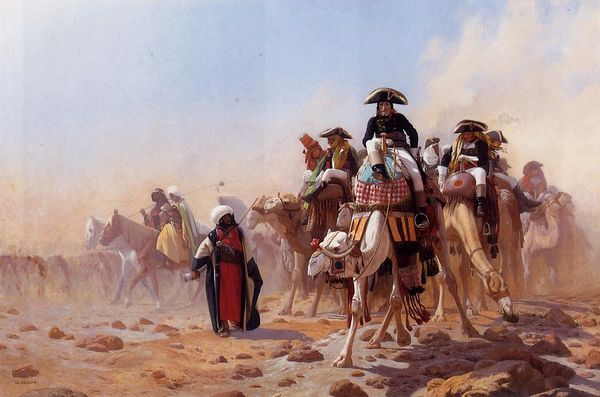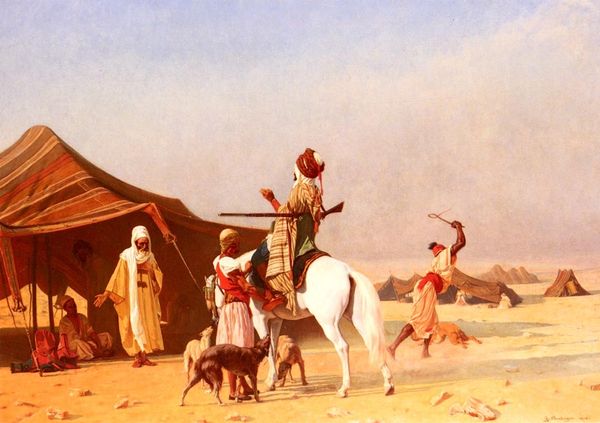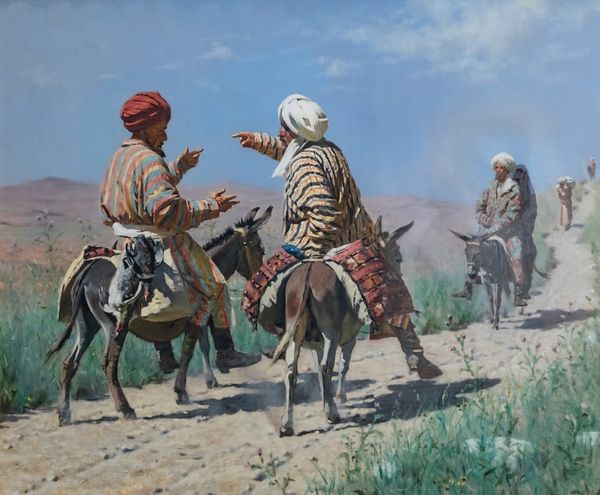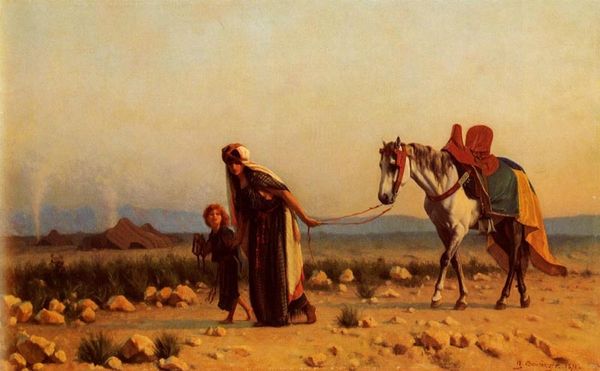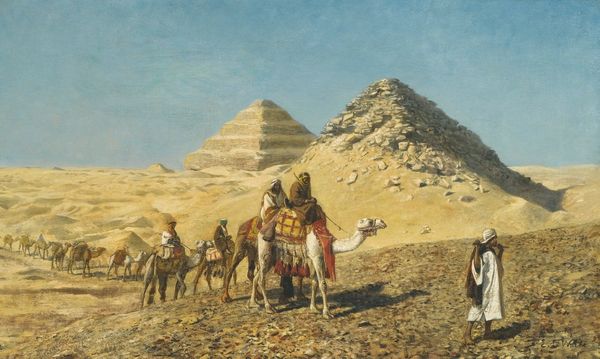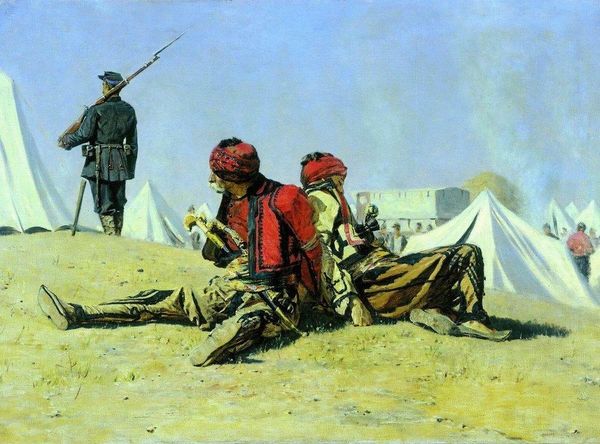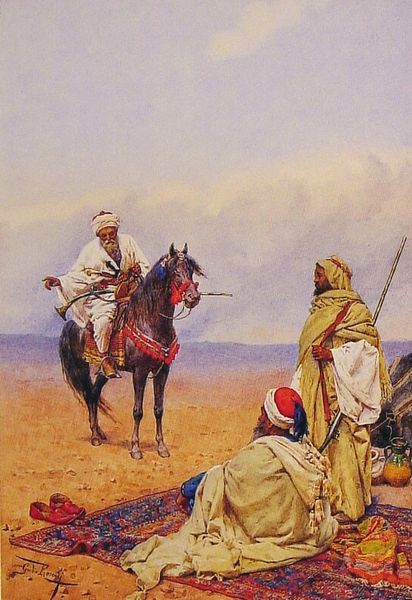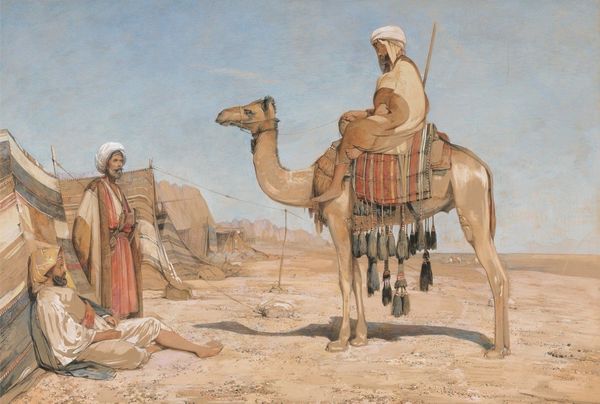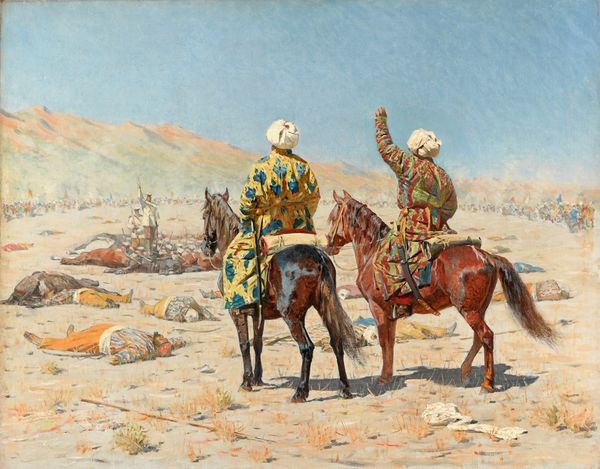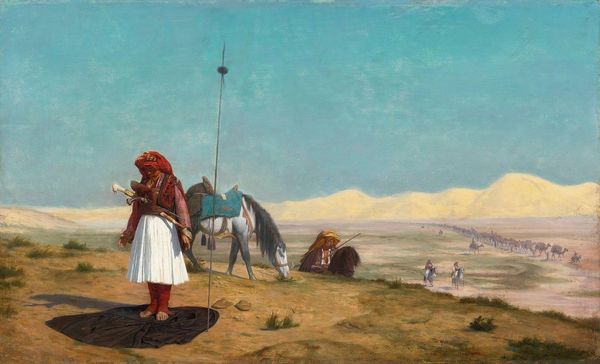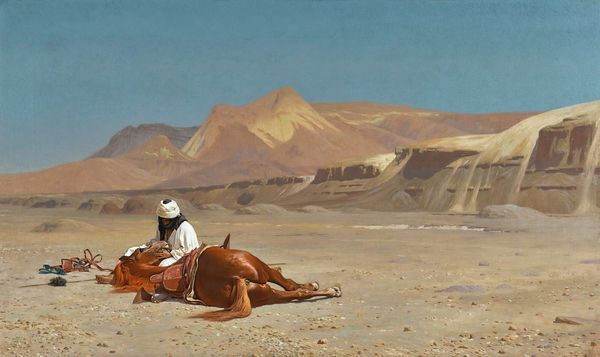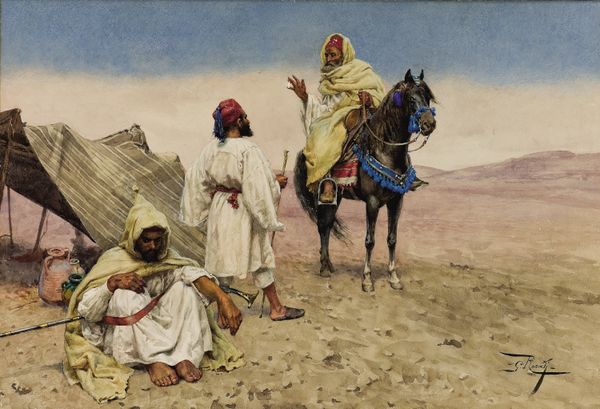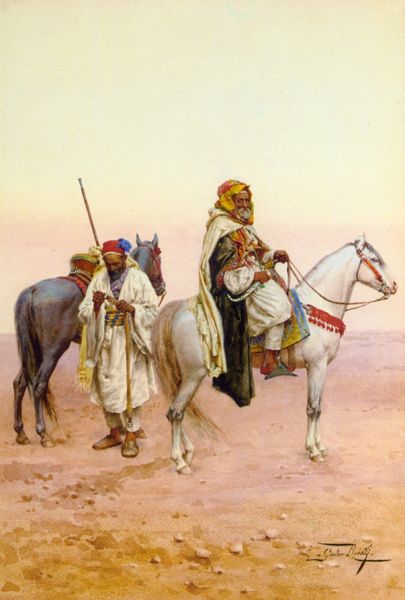
Copyright: Public Domain: Artvee
Editor: Jean-Léon Gérôme’s "Riders Crossing the Desert," painted in 1870 using oil paints, feels so meticulously crafted. The details in the figures' clothing and the rendering of the horses are stunning, yet the landscape is bleak. How do you interpret this work, thinking about its construction? Curator: Considering it through a materialist lens, it is essential to look beyond the surface and see how the means of production shape its message. Gérôme's detailed oil painting, reflecting Orientalist themes, was aimed at a very specific consumer base. Who were buying these paintings, and what did they expect to see reflected in these constructed images of a 'romantic' and somewhat fantasized East? Editor: So, it's not just a snapshot of a desert scene, but a manufactured view created with the market in mind. What's your read on the technical skill? Does the painstaking technique fit within the critique? Curator: Absolutely. The technical skill involved—the careful rendering, the illusion of light and shadow achieved through the precise layering of oil paint—contributes to the perceived authenticity, or "truthfulness," of the scene. This reinforces the Western consumer's idea of what the East 'should' look like. Editor: That's a sharp point. I see now how the deliberate choice of materials and detailed technique serves the consumption needs of a particular audience in a specific time, adding a layer of complexity to the seemingly straightforward image. Curator: Exactly. The painting becomes less about a faithful depiction of reality and more about the power dynamics inherent in its creation and consumption, which reflect an imbalanced perspective between the West and the East. It’s all about unpacking the 'how' to reveal the 'why'. Editor: Thanks for clarifying, I see it completely differently now. It's not simply beautiful craftsmanship but also an artifact embedded in its cultural and historical context, packaged for a particular audience. Curator: Precisely. Understanding how materials, labor, and consumption intersect is the key to understanding much of nineteenth-century art.
Comments
No comments
Be the first to comment and join the conversation on the ultimate creative platform.
